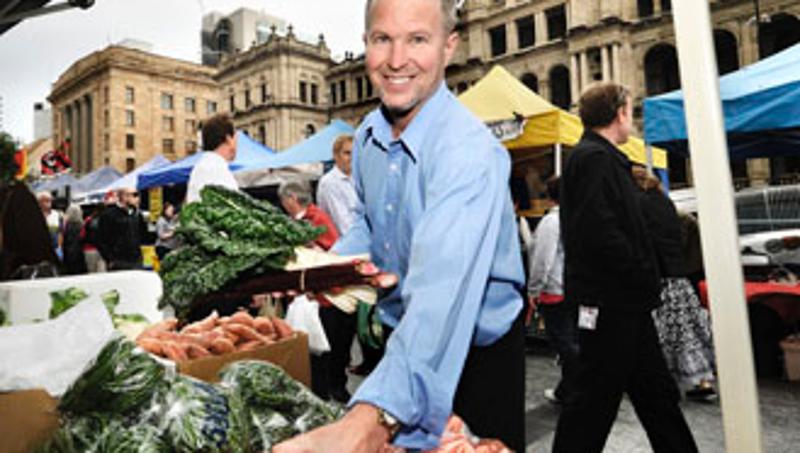
Men tend to be "grab and go" grocery shoppers who prefer fast and efficient service over quibbling on price and choice, according to a Queensland University of Technology study.
Dr Gary Mortimer, from QUT's School of Advertising Marketing and Public Relations, studied the shopping differences between men and women.
"In most advanced economies, grocery shopping is considered to be the female's domain," he said.
"However the latest statistics show that 40 per cent of men do the grocery shopping."
Dr Mortimer said his study of 280 shoppers sought to identify behaviour differences between these new age male shoppers and the traditional female grocery shopper.
"The study found that men and women, in the context of grocery shopping, behave very differently," he said.
"With respect to planning, men will seldom use lists, unless one has been prepared for them and men will rarely read catalogues.
"Women in contrast will read store catalogues, prepare lists and plan their grocery shopping effectively."
He said men would also visit the supermarket more frequently, up to four times more per week, but would purchase fewer items and spend less time in the supermarket than women.
"Men will spend more per item than women and this is related to a lack of planning," Dr Mortimer said.
"Men generally don't look at price labels or consider freshness, quality and other important characteristics such as friendly operators, cleanliness and easy parking.
"Women, in contrast, consider these aspects to be vitally important when choosing a supermarket."
He said men wanted a fast and efficient shopping experience.
"Things like self-serve check-outs, more staff on registers and less range of products appealed to men," he said.
Dr Mortimer's study also identified five distinct types of male shoppers:
- The Mr Budget Conscious shopper (35.3 per cent) who wants value;
- The Mr Convenience shopper (23.5 per cent) who wants efficient service;
- The Mr Egocentric shopper ( 22.5 per cent) who doesn't care about price, brand or store characteristic. He doesn't like shopping and will purchase "treats" to compensate for time spent shopping;
- The Mr Equitable shopper ( 15.5 per cent) who enjoys shopping and shares the responsibility with their spouse;
- The Mr Controlled shopper (3.6 per cent) who uses lists, considers brands, price and ingredients.
Dr Mortimer said changing social demographics had played a significant role in pushing men down the shopping aisle.
"Changes in the family unit, whether it is the fact more women are in the workforce, men and women are waiting longer to live together, or the higher rate of divorce, all impact on the need for men to grocery shop," Dr Mortimer said.
He said retailers today still defined their core customer as female, overlooking the male shopper.
"If men want a faster shopping experience, then supermarkets need to consider changing their practices to meet this group's shopping needs," he said.
Media contact - Sandra Hutchinson, QUT media officer, 07 3138 2999 or s3.hutchinson@qut.edu.au


